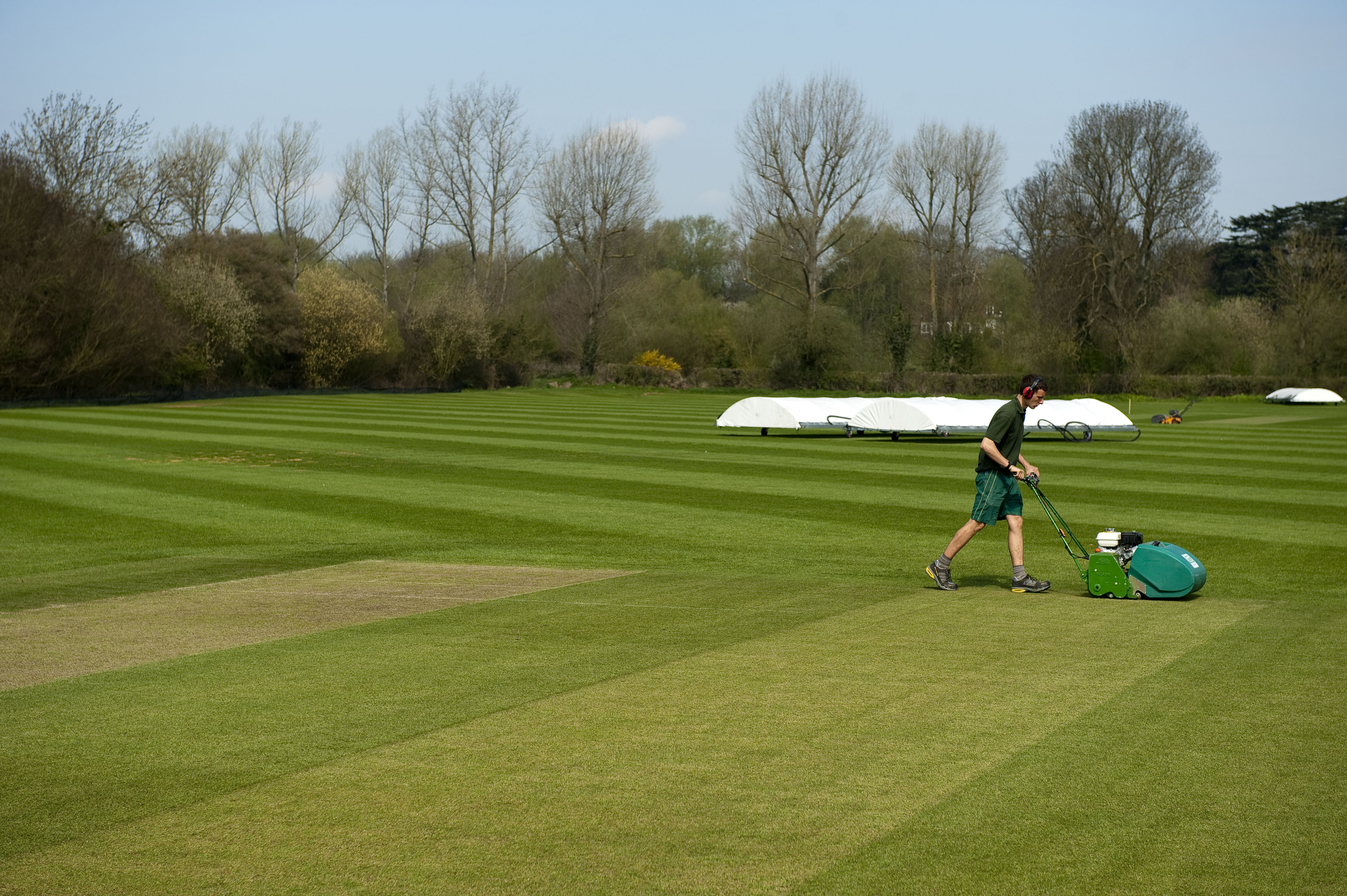The Phases of Pitch Preparation
A typical programme of works for cricket pitch preparation is as follows:
- Phase 1: Initial Phase:
- Define your pitch and provide the initial cut.
- Thin the sward and undertake any minor repairs to levels.
- Make sure that there is sufficient moisture at depth.
- Phase 2: Conditioning Phase:
- Rolling.
- Grooming the grass.
- Mowing.
- Controlling moisture.
- Phase 3: Finishing Phase:
- Final Cut
- Marking out
- Installing the stumps
Time planning
Traditionally, cricket pitches have been prepared on a ’14 day’ or a ’10 day’ cycle. The reality is you will probably have a day that suits best for starting to prepare pitches (based on your availability and fixtures during the week) so do not get too hung up on the exact number of days, which will vary according to the time of year and the weather. This timeline shows pitch preparation starting on a Monday, with the first match on the Saturday of the following week.
If the process starts on Sunday or Tuesday, it will not matter. If the initial phase only takes a day and not two days, it does not matter, as long as it is done properly. In reality, and particularly in recreational cricket, the number of days has to flex around fixtures, volunteer availability and the weather, so pitch preparation becomes variable in length with the variability typically coming in the Conditioning Phase.
The length of the Conditioning Phase needs to be flexible because it will depend on weather and soil type: in cooler and wetter conditions (common in early season) it will take longer to dry the pitch out after its initial watering than it will in the height of summer when temperatures are greater and day length longer. More clayey/silty soils take longer to dry than loams with a greater proportion of sand.
Note that it is unlikely that starting the Initial Phase on the second Monday (5 days before) will produce a good pitch, so make sure you plan ahead.
Drying the pitch out is critical to effective rolling so try not to compress this time too much (for an explanation of why this is – see the in depth Rolling Pitches Click here. If the weather is against you, focus on rolling more during that period and try and get the game on.
The following sections explain how each of these processes is affected by time and weather.



 Tweet
Tweet